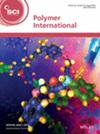Km Supriya Das, Neha Singh, Kuladip Barman, Shivani Kasana, Balak Das Kurmi, Ghanshyam Das Gupta, Preeti Patel
求助PDF
{"title":"Advancements in molecularly-imprinted-polymer-based biomarker detection for various diseases: a comprehensive overview","authors":"Km Supriya Das, Neha Singh, Kuladip Barman, Shivani Kasana, Balak Das Kurmi, Ghanshyam Das Gupta, Preeti Patel","doi":"10.1002/pi.70004","DOIUrl":null,"url":null,"abstract":"<p>Molecularly imprinted polymers (MIPs) have garnered considerable attention across various fields due to their exceptional specificity and affinity for biomarker detection. These polymers exhibit significant potential in pharmaceuticals, disease diagnosis, electrochemical sensing, extraction of bioactive compounds, pathogen identification and environmental chemistry. The interdisciplinary fusion of chemistry, medicine, analytical techniques and sensing technologies has greatly benefited from the stability and effectiveness of MIPs. The synthesis of MIPs involves various methodologies, including integration of membrane separation technology with molecular imprinting technology. Their structure and composition are characterized using a variety of physical, chemical and thermal techniques. This review explores various aspects of MIP-based biomarker recognition, providing classifications of biomarkers and a balanced discussion on both the advantages and limitations of current approaches. Moreover, the review highlights extensive applications of MIPs, as detection of cancer and neurodegenerative disease markers as well as identification of volatile biomarkers. MIPs have shown promising capabilities in early-stage screening of protein biomarkers and electrochemical detection of pathogens and other biological markers, including non-invasive samples such as saliva. Although applications of MIPs in catalysis and drug delivery are still in their infancy, there are numerous opportunities for further research and development that could lead to significant advancements in coming years. © 2025 Society of Chemical Industry.</p>","PeriodicalId":20404,"journal":{"name":"Polymer International","volume":"74 9","pages":"783-799"},"PeriodicalIF":3.6000,"publicationDate":"2025-07-08","publicationTypes":"Journal Article","fieldsOfStudy":null,"isOpenAccess":false,"openAccessPdf":"","citationCount":"0","resultStr":null,"platform":"Semanticscholar","paperid":null,"PeriodicalName":"Polymer International","FirstCategoryId":"92","ListUrlMain":"https://scijournals.onlinelibrary.wiley.com/doi/10.1002/pi.70004","RegionNum":4,"RegionCategory":"化学","ArticlePicture":[],"TitleCN":null,"AbstractTextCN":null,"PMCID":null,"EPubDate":"","PubModel":"","JCR":"Q2","JCRName":"POLYMER SCIENCE","Score":null,"Total":0}
引用次数: 0
引用
批量引用
Abstract
Molecularly imprinted polymers (MIPs) have garnered considerable attention across various fields due to their exceptional specificity and affinity for biomarker detection. These polymers exhibit significant potential in pharmaceuticals, disease diagnosis, electrochemical sensing, extraction of bioactive compounds, pathogen identification and environmental chemistry. The interdisciplinary fusion of chemistry, medicine, analytical techniques and sensing technologies has greatly benefited from the stability and effectiveness of MIPs. The synthesis of MIPs involves various methodologies, including integration of membrane separation technology with molecular imprinting technology. Their structure and composition are characterized using a variety of physical, chemical and thermal techniques. This review explores various aspects of MIP-based biomarker recognition, providing classifications of biomarkers and a balanced discussion on both the advantages and limitations of current approaches. Moreover, the review highlights extensive applications of MIPs, as detection of cancer and neurodegenerative disease markers as well as identification of volatile biomarkers. MIPs have shown promising capabilities in early-stage screening of protein biomarkers and electrochemical detection of pathogens and other biological markers, including non-invasive samples such as saliva. Although applications of MIPs in catalysis and drug delivery are still in their infancy, there are numerous opportunities for further research and development that could lead to significant advancements in coming years. © 2025 Society of Chemical Industry.
基于分子印迹聚合物的各种疾病生物标志物检测进展综述
分子印迹聚合物(MIPs)由于其特殊的特异性和对生物标志物检测的亲和力,在各个领域引起了相当大的关注。这些聚合物在制药、疾病诊断、电化学传感、生物活性化合物提取、病原体鉴定和环境化学方面具有巨大的潜力。化学、医学、分析技术和传感技术的跨学科融合极大地受益于MIPs的稳定性和有效性。MIPs的合成涉及多种方法,包括膜分离技术与分子印迹技术的结合。它们的结构和组成是用各种物理、化学和热技术表征的。这篇综述探讨了基于mip的生物标记物识别的各个方面,提供了生物标记物的分类,并对当前方法的优点和局限性进行了平衡的讨论。此外,该综述强调了MIPs的广泛应用,作为癌症和神经退行性疾病标志物的检测以及挥发性生物标志物的鉴定。MIPs在蛋白质生物标记物的早期筛选和病原体和其他生物标记物的电化学检测(包括唾液等非侵入性样品)方面显示出了很好的能力。虽然MIPs在催化和药物输送方面的应用仍处于起步阶段,但未来几年有许多进一步研究和开发的机会,可能会取得重大进展。©2025化学工业协会。
本文章由计算机程序翻译,如有差异,请以英文原文为准。




 求助内容:
求助内容: 应助结果提醒方式:
应助结果提醒方式:


